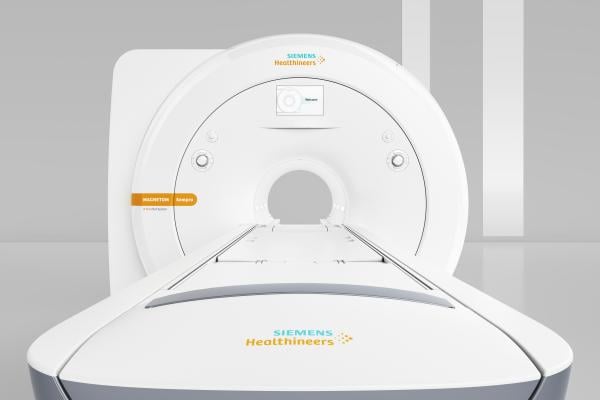
January 9, 2017 — At the 2016 annual meeting of the Radiological Society of North America (RSNA), Siemens Healthineers presented the Magnetom Sempra, a 1.5T magnetic resonance imaging (MRI) scanner with low operating costs, innovative technologies and a unique, integrated Siemens Healthineers service concept. The Magnetom Sempra is designed to allow radiological practices and groups, as well as small and medium-sized hospitals, to work profitably despite growing cost pressures in the industry. Additionally, the system’s standardized workflows are designed to help institutions achieve consistent, user-independent quality.
Achieving consistent MRI results, particularly for follow-up examinations, is extremely important to radiology providers. However, high levels of staff turnover, varying levels of staff experience and diverse patient populations can negatively impact exam quality. With the MRI imaging software DotGO, Magnetom Sempra users can react flexibly to each case and to the condition of each patient while simultaneously standardizing the exam. The system also includes as standard three of the company’s Dot (Day optimizing throughput) engines to automate and streamline workflow when examining the brain, spine and large joints. These Dot engines cover roughly three-quarters of the average examination volume, and help users increase productivity as well as avoid unnecessary repeat scans.
Given healthcare’s competitive pressure and the rise in quality demands, clinical differentiation is increasingly important for radiology providers. The Magnetom Sempra includes applications for responding to these needs. Now, facilities can scan in the presence of MR-safe metallic implants with better visualization of the soft tissue surrounding the implant. Even patients with knee implants can receive high-quality imaging, which was often impossible in the past. The system’s software platform includes Quiet Suite technology, which features optimized gradient switching that can reduce sound pressure by up to 97 percent in brain and musculoskeletal exams with comparable image quality. This technology is particularly beneficial for anxious patients and provides a more positive patient experience during MRI exams. The system can achieve high image quality with short breath-hold times, which means patients with shortness of breath can now be scanned, too.
The system can increase productivity while reducing operating costs. Ten-minute exams with time- and image-optimized protocols cover most commonly scanned body parts. For example, a complete brain scan — from patient positioning on the table to exam completion — is just 10 minutes with the Magnetom Sempra. This exam time may help practices and hospitals operate profitably despite increasing financial pressure due to reduced reimbursement rates. The system’s embedded Siemens Healthineers Connect Plan offers financial certainty and lowers total cost of ownership by delivering remote service, and helps ensure higher uptime.
To reduce overall operating costs, the system is equipped with Eco-Power technology, which monitors and controls the magnet-cooling helium. In stand-by mode, Eco-Power monitors the helium cycle and controls helium cooling and re-liquefaction more efficiently to reduce energy consumption by up to 30 percent compared to the scanner’s normal mode. A supplementary feature, Zero Helium boil-off technology, prevents helium evaporation, so operators can avoid expensive helium refills and resultant downtimes.
The Magnetom Sempra is U.S. Food and Drug Administration (FDA) 510(k) pending.
For more information: www.healthcare.siemens.com


 December 15, 2025
December 15, 2025 









